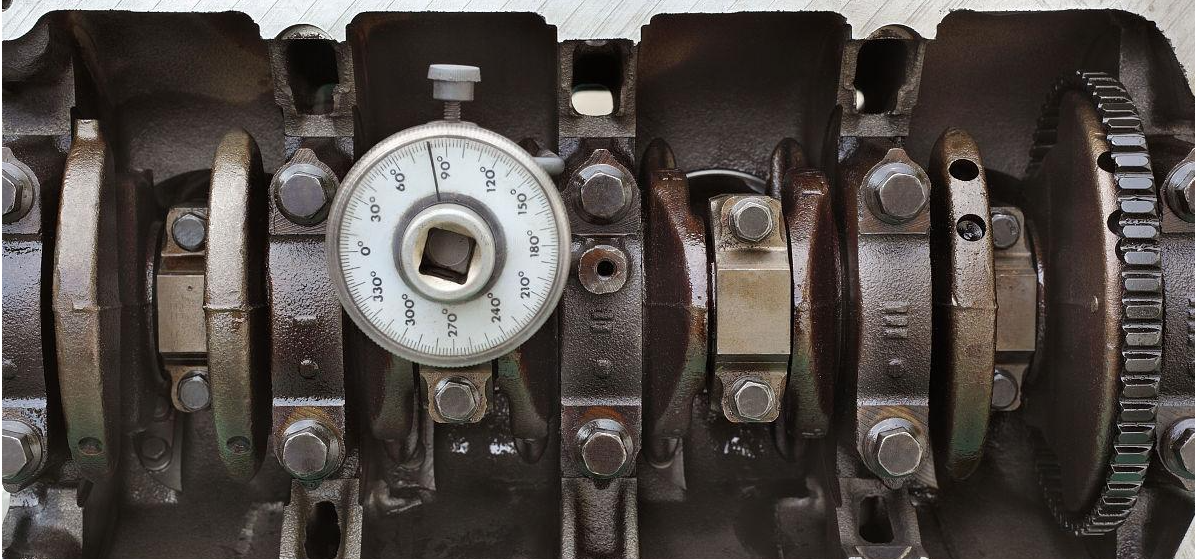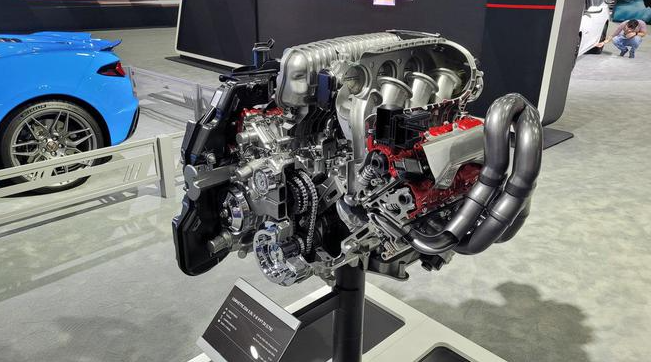The standard size of a crankshaft varies depending on the type and specifications of the engine. It’s characterized by its length, main journal diameter, and rod journal diameter. However, specific dimensions can only be accurately given based on a particular engine model or type. It’s essential to check the manufacturer’s specifications for the correct size.
The Basics of a Crankshaft
A crankshaft, a vital component in an internal combustion engine, transforms linear piston movement into rotational motion. This critical role makes the crankshaft size essential as it can significantly influence an engine’s performance. Click here to read more about crankshafts on Wikipedia.
Functions of a Crankshaft
The crankshaft serves as a platform for connecting rods, translating the linear motion of the pistons into rotational motion used to power the vehicle. The crankshaft’s size and design can directly affect an engine’s power output, operating smoothness, and efficiency.
Crankshaft Size and Performance
Crankshaft size, including its length, diameter, and weight, can influence an engine’s horsepower and torque. Understanding this relationship helps engine designers optimize performance according to specific application needs.
Measuring a Crankshaft
Determining the size of a crankshaft involves measuring its main and rod journal diameters, stroke length, and overall length. Accurate measurement requires specialized tools such as micrometers and dial bore gauges.
Tools for Measuring a Crankshaft
Several tools are essential for crankshaft measurement, including micrometers for journal diameters, calipers for overall dimensions, and stroke gauges for determining the crankshaft stroke.
Step-by-Step Crankshaft Measurement Process
This section provides a detailed walkthrough of how to accurately measure a crankshaft, ensuring precision to maintain optimal engine performance.
Crankshaft Sizes: Gasoline vs Diesel Engines
Crankshaft sizes can vary significantly between gasoline and diesel engines, mainly due to differences in operating characteristics and design philosophies. This Wikipedia page offers more insights into the differences between gasoline and diesel engines.
Crankshaft Size in Gasoline Engines
Gasoline engines typically employ lightweight, smaller crankshafts to achieve high RPMs. This section explores the standard dimensions for gasoline engine crankshafts and their impact on engine performance.
Crankshaft Size in Diesel Engines
Compared to gasoline engines, diesel engines generally have larger, more robust crankshafts to handle the high compression ratios and greater torque produced. We delve into the common sizes of diesel engine crankshafts in this section.
Importance of Correct Crankshaft Size
The size of the crankshaft can have significant impacts on engine performance and longevity. An appropriately sized crankshaft ensures that the engine operates efficiently, reduces wear on other engine components, and ultimately extends the engine’s lifespan.
Performance and Engine Efficiency
The size of the crankshaft affects engine performance parameters such as horsepower and torque. A well-proportioned crankshaft optimizes engine performance, reducing friction and enhancing fuel efficiency.
Longevity and Wear Reduction
The right size of the crankshaft reduces wear on other engine components, such as bearings and seals. This can lead to increased longevity and reduce maintenance needs over time.
Impact of Wear and Tear on Crankshaft Size
Wear and tear can significantly impact the size of a crankshaft over time. Regular maintenance and monitoring can help mitigate these effects and extend the lifespan of the crankshaft.
Effects of Wear and Tear
Over time, the crankshaft can wear down, causing changes in its size. This can lead to issues with engine performance and efficiency.
Maintenance and Repairs
Regular inspections and maintenance can help identify any changes in the crankshaft size due to wear and tear. When detected early, repairs or replacements can be made to prevent further engine damage.
Frequently Asked Questions About Crankshafts
In this final section, we answer common questions about crankshafts, including queries about size, maintenance, and potential problems.
| Question | Answer |
|---|---|
| What is the average lifespan of a crankshaft? | This varies based on use and maintenance, but a crankshaft can often last the entire lifetime of the vehicle with proper care. |
| How often should a crankshaft be inspected? | Regular inspections are recommended, but the frequency depends on the vehicle’s usage. Heavy-duty vehicles may require more frequent inspections. |
| What signs might indicate a problem with the crankshaft? | Symptoms might include engine vibration, knocking noises, or oil leaks. If you experience these, it’s best to have your vehicle inspected by a professional. |
When it comes to engines and their components, understanding dimensions is key to performance, maintenance, and potential repairs. In the world of crankshafts, the size varies depending on the engine type and specifications. At FDautoparts, we acknowledge this diversity and offer a wide range of options to cater to our customers’ needs.
Understanding Crankshaft Dimensions
A crankshaft’s dimensions consist of its length, main journal diameter, and rod journal diameter. These sizes are crucial for ensuring engine compatibility and performance. At FDautoparts, we offer crankshafts in various sizes, ensuring that we meet your specific needs.
Standard Size Variation
The standard size of a crankshaft varies based on engine type, brand, and model. For example, the crankshaft size for a small gasoline engine will differ from that of a large diesel engine. At FDautoparts, we provide a comprehensive range of options to cater to all types of engines.
The Role of Crankshaft Size in Engine Performance
The size of a crankshaft plays a significant role in determining an engine’s performance. At FDautoparts, we understand the importance of size in relation to horsepower, torque, and engine efficiency.
Horsepower and Torque
The size of the crankshaft can influence the amount of horsepower and torque an engine can produce. At FDautoparts, we provide crankshafts that are optimized to help your engine achieve its maximum potential.
Engine Efficiency
Similarly, the size of a crankshaft can also influence engine efficiency. A well-sized crankshaft can reduce friction, improving fuel efficiency and longevity. At FDautoparts, our crankshafts are designed with these considerations in mind.
Maintaining the Right Crankshaft Size
Ensuring the crankshaft remains at its correct size is key to preserving engine performance and reducing unnecessary wear. FDautoparts is committed to helping you maintain your engine’s health through our quality components and helpful advice.
Wear and Tear
Over time, wear and tear can alter the size of the crankshaft, leading to potential issues. Regular inspection and maintenance can help detect any changes, allowing for timely repairs. FDautoparts’ expert team is always ready to assist in this regard.
Replacement and Upgrades
In some cases, replacing or upgrading your crankshaft might be necessary to maintain or improve engine performance. FDautoparts provides a wide range of replacement options, catering to diverse engine types and performance requirements.